A traditional Japanese home has unique interior and architectural features which are considered important to the culture and history of Japan. These houses tend to be close to each other and small irrespective of whether it is built in rural or urban settings. However, traditional Japanese home design is one that promotes natural light, privacy and contact with the elements.
Japanese interior design was introduced during the 19th century when trade between the East and West opened up. During previous centuries traditional Japanese house interior style was not popular or adopted by other cultures. The concept is a Japanese minimalist interior design in designing a “Zen” interior.
Westerners often frowned upon a Japanese house interior due to its austerity and simplicity, as you will not find anything that does not belong or in excess. Whatever is inside the home, has a purpose and has symbolic significance.
Japanese interior design concept
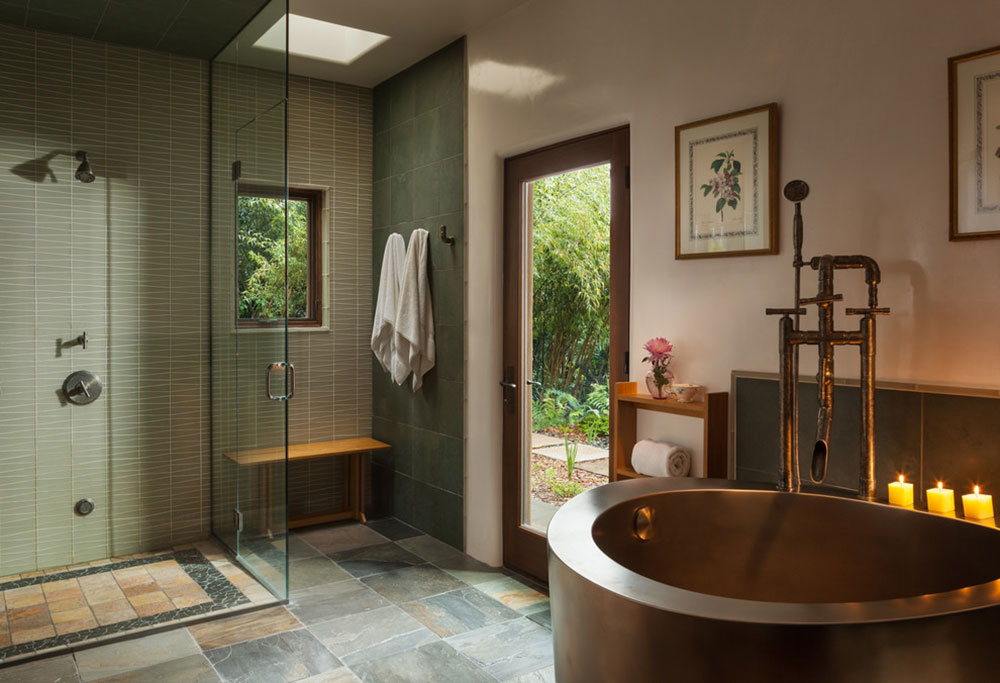
Image source: Wendy McEahern Photography
“Ma” is the key to traditional Japanese house interior design. the aim of the concept is creating a balance between objects like furniture on the one side and available space on the other. The main principles of a traditional Japanese home are uncluttered and clear interiors which create a calm and special space for all.
How a traditional Japanese home looks like
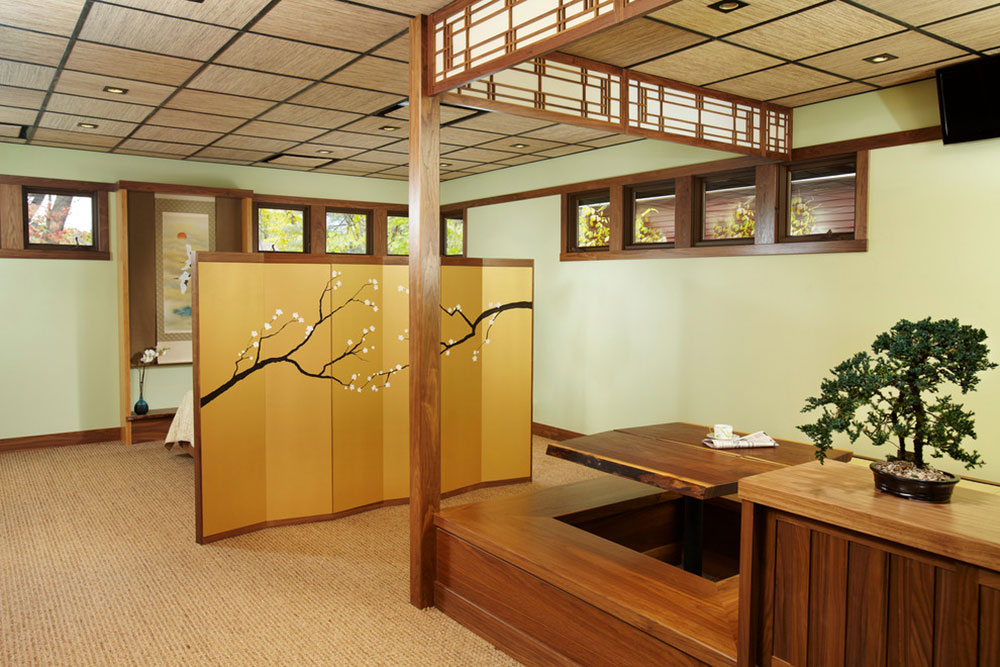 Image source: Daedal Woodworking
Image source: Daedal Woodworking
A modern Japanese house interior embraces ancient customs, order, balance, and the love for natural beauty. A traditional Japanese home emphasizes the value of intuition and mediation and the Japanese rooms designs encourage peaceful simplicity while surrounded by modern Japanese culture.
Traditionally a Japanese interior has no walls or rather not as the modern Westerner knows it. The Japanese homes’ interiors use light sliding panels called fusuma that acts as the walls and doors. They are made from rice paper and bamboo.
Interior Features of a traditional Japanese home
Japanese house design has been adopted by many western architects who introduced this style around the world. Some of the essential concepts are shared below.
The abundance of empty space
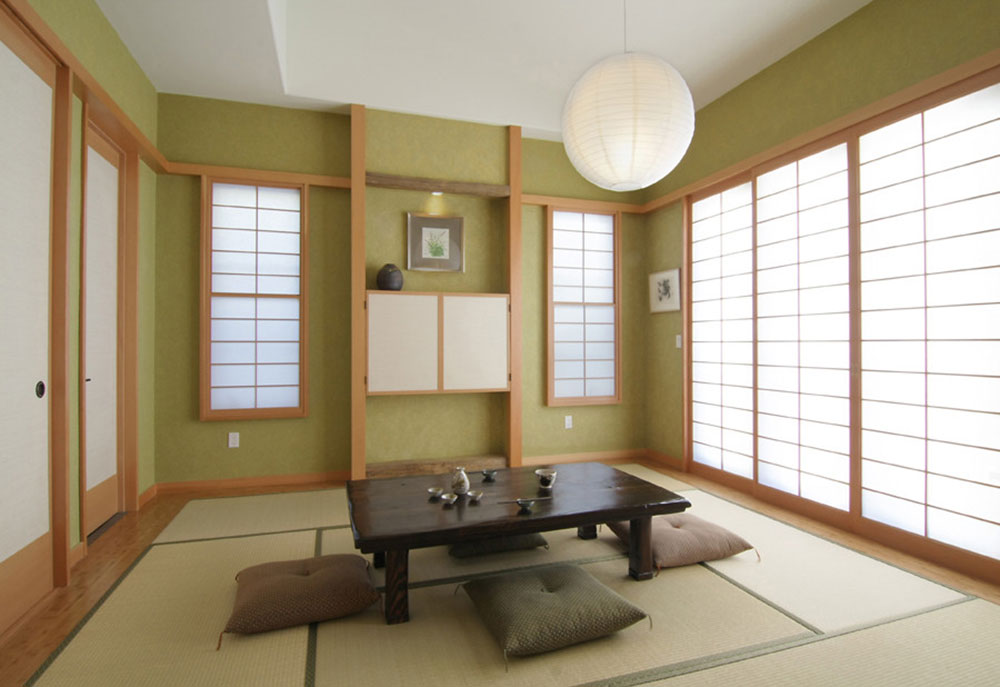 Image source: Konni Tanaka Design Group
Image source: Konni Tanaka Design Group
You will not find a Japanese style interior that is cluttered with small trinkets and excess furniture. It is ideal to have nothing on the floor of the traditional Japanese interior, but a mat made of rice straw, which is called a tatami. Other furniture that would be present includes a dresser, a low wooden table with cushions on the floor for seating and mats called futons that are stored away when not used.
You will not find any distraction and a feeling of weightless openness is created a result. One very positive aspect of a traditional Japanese interior is that it is a dust-free space which is easy to clean and keep clean.
Gated entries
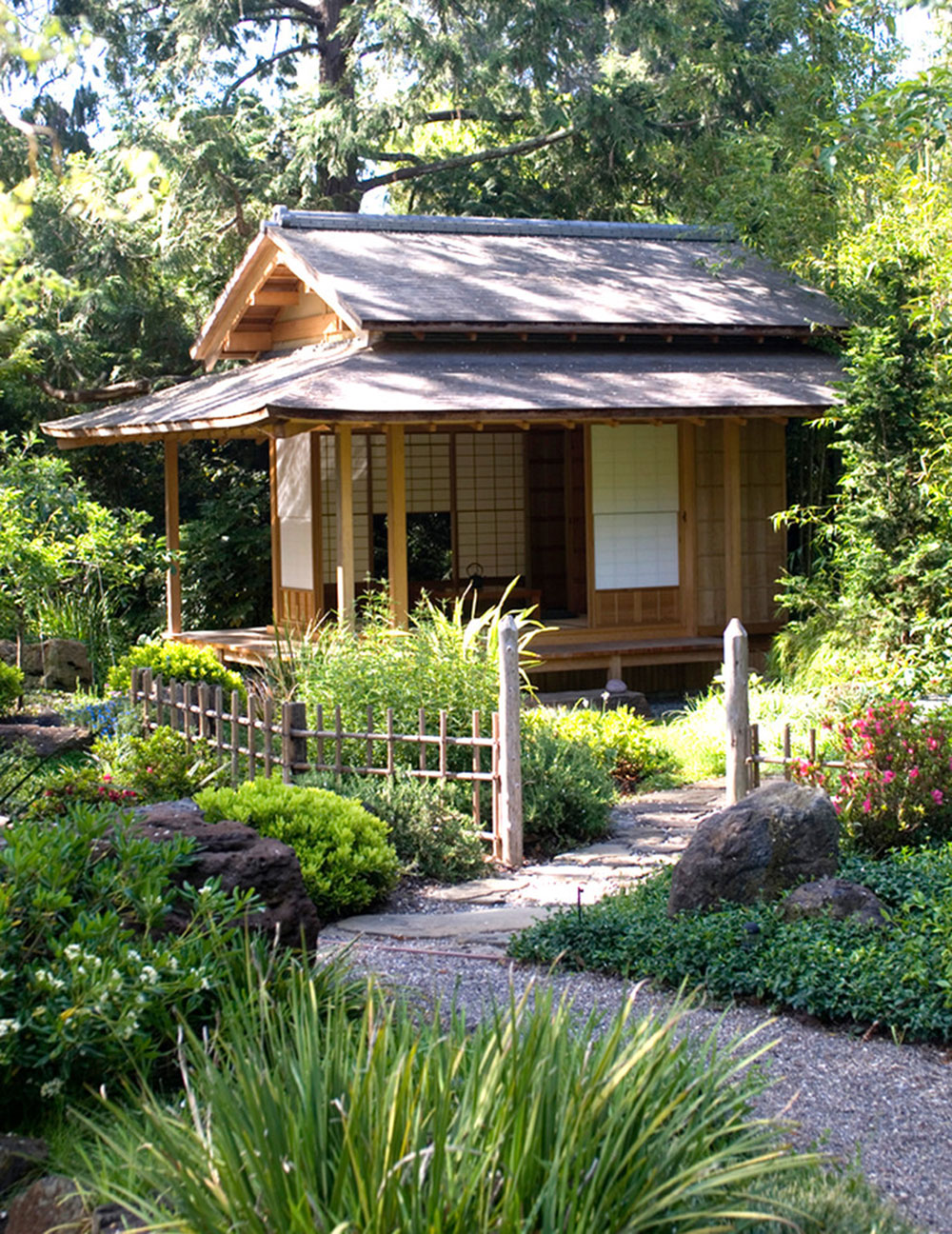 Image source: Ki Arts
Image source: Ki Arts
In Japan residential streets lack footpaths, therefore, is the property’s privacy and public space separated only by a gate. Traditionally a roofed gate is the only separation between a hidden residence and the street.
Optimal siting
 Image source: Kelso Architects
Image source: Kelso Architects
In Japan, the houses are built north-south and to get most of the sunlight the rooms face south. In traditional Japanese style, a view is a major consideration and gardens, water or mountains form an essential part of the build. Apartment dwellers and homeowners in Japan sees natural light as an essential part of living and therefore incorporated in building style.
Elements of Nature in Japanese Style Interiors
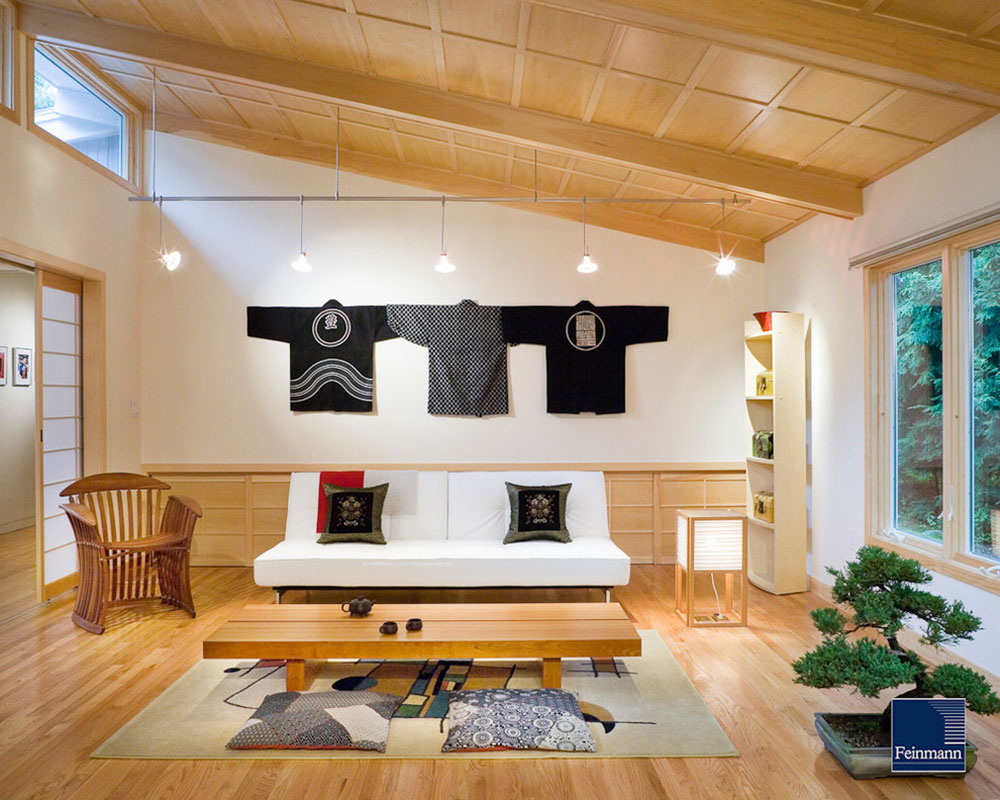 Image source: Feinmann, Inc.
Image source: Feinmann, Inc.
Traditional Japanese house interior embraces nature and it is something that they have loads of respect for. To bring nature indoors there are a number of Japanese plants like bamboo and bonsai to add Japanese culture to interiors. Similarly, will any greenery like orchid or palms also be suitable. You will not see colorful flower arrangements etc. in a Japanese interior, only natural and simple greenery.
Sliding Doors and Screens
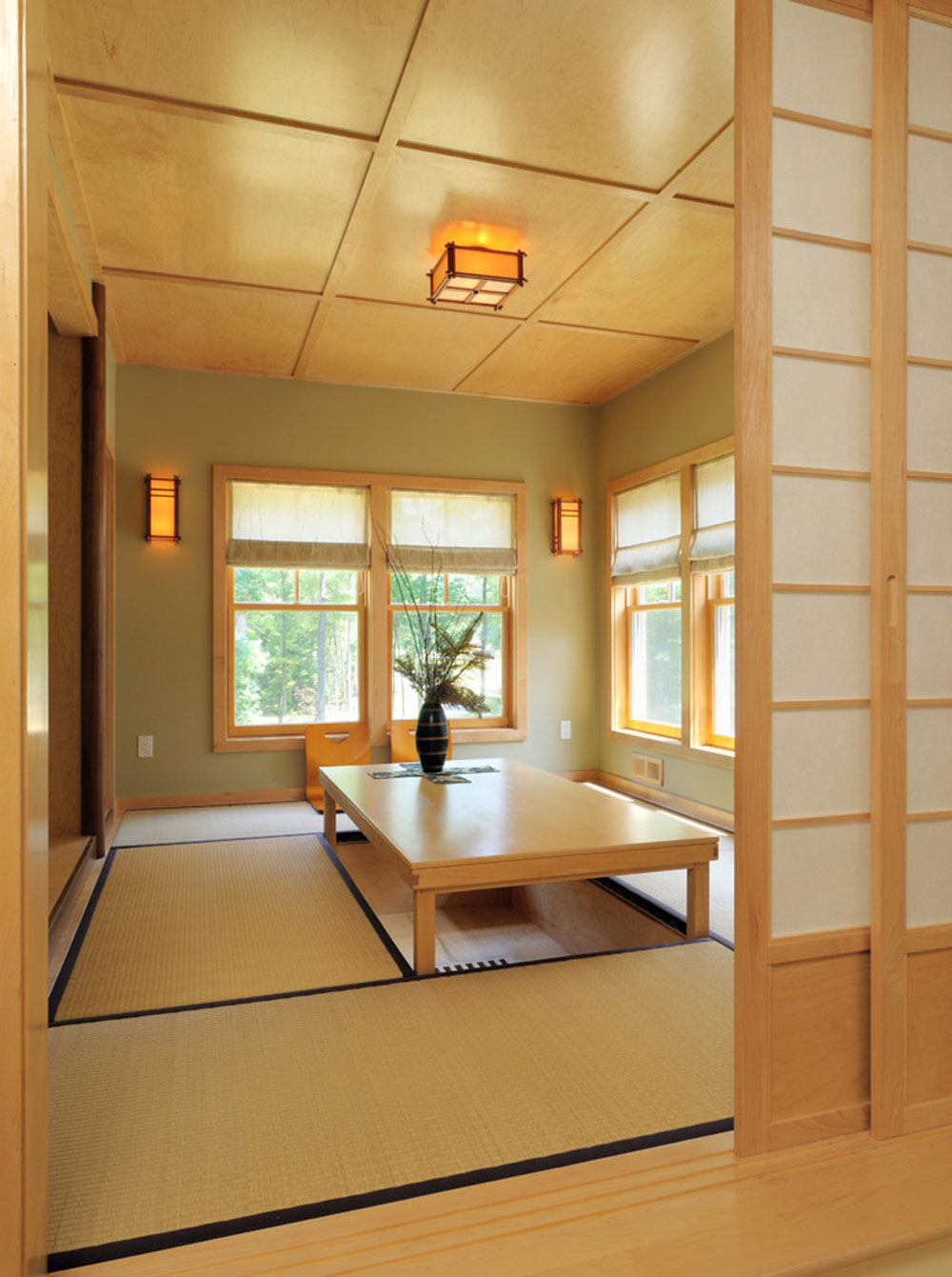 Image source: Kuhn Riddle Architects
Image source: Kuhn Riddle Architects
In Japan space is scarce and homes are expensive, therefore will the traditional Japanese home be small especially compared to western standards. Old Japanese interior designs do not have doors and walls but rely instead on fusuma (sliding doors) and shoji (movable screens) to divide rooms.
Glass windows do not feature, but shutters are used instead of windows while the screens are papered and light which allows for adequate light to enter.
Shoji
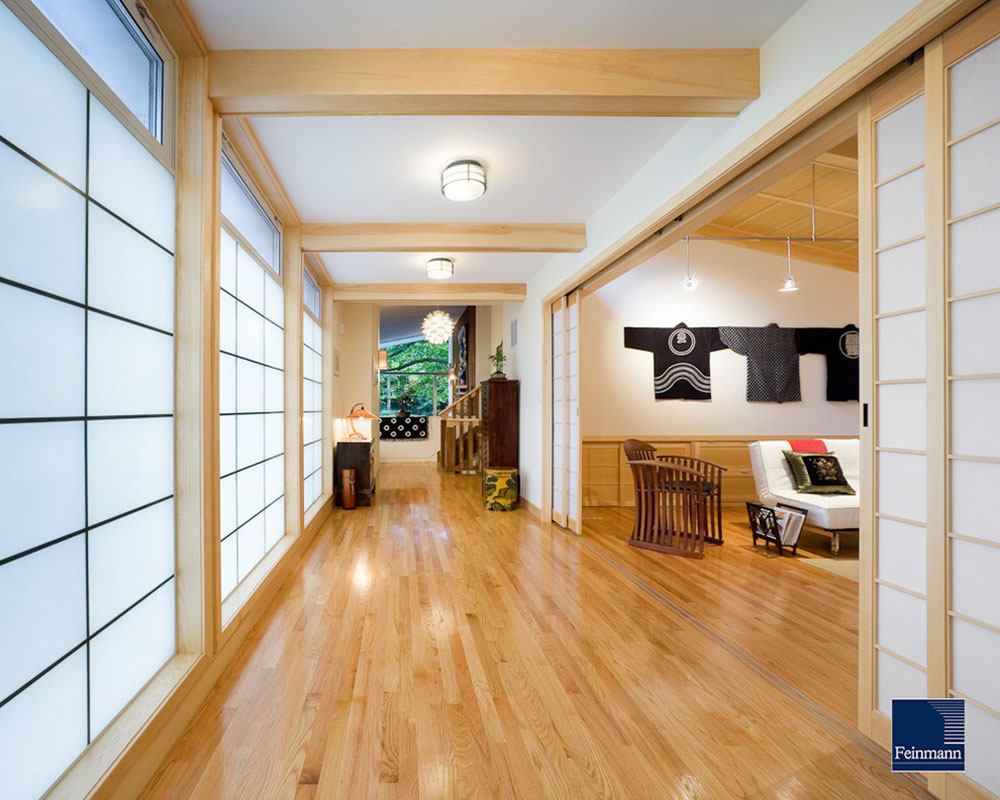 Image source: Feinmann, Inc.
Image source: Feinmann, Inc.
A Japan home design style does not use glass but interesting ideas to incorporate light. A shoji plays a big role in Japanese style interior as it is an authentic Japanese screen. It is a wooden or bamboo frame with translucent paper and it slides instead of swing like a traditional door. They are used for both exterior and interior walls.
Soaking Tub
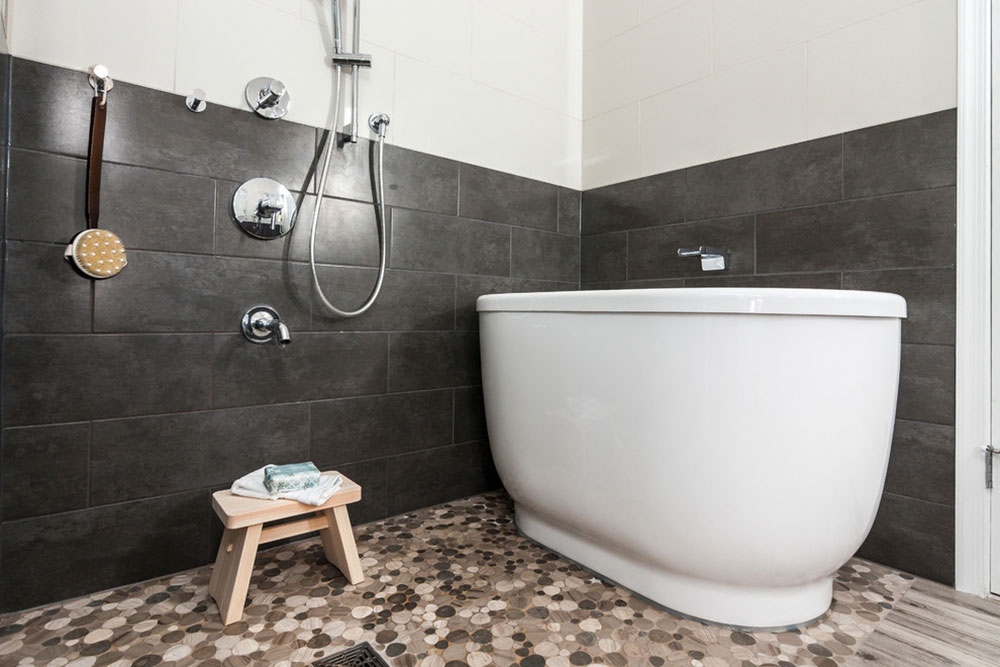 Image source: House to Home Solutions
Image source: House to Home Solutions
Japanese interior designers know the importance of a soaking tub in a traditional Japanese home interior. An important and traditional Japanese interior is incorporating water into the home, which is often only achieved by a soaking tub. These tubs are deep and rather small compared to some western baths and have a small bench seat.
Wood and Bamboo Elements
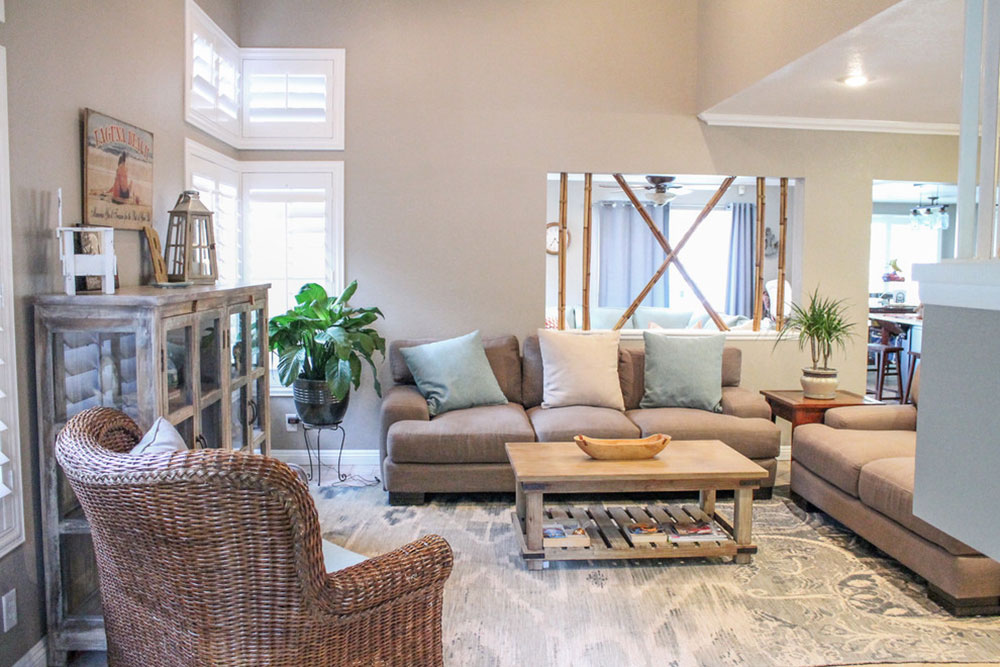 Image source: Prink and Preen, LLC
Image source: Prink and Preen, LLC
Japanese interior design always has elements of bamboo and wood. You will notice it in various places like frames, screen grids, doors, and walls. When you want to add this common interior designing concepts into a Western home, you can use natural wood like red pine, hemlock, cypress, and maple. In the east and west, bamboo is the commonly used material.
Other ways that you can imitate Japanese interior design, is through wooden screens in your home as well as wooden floors.
Japanese Style Entryway
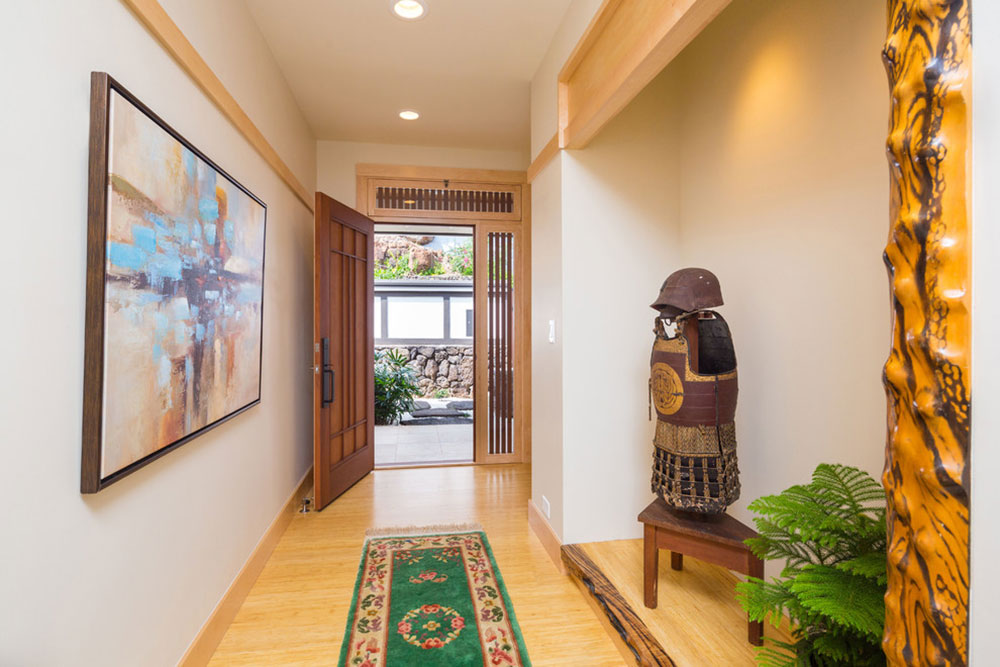 Image source: Kelso Architects
Image source: Kelso Architects
When you refer to an entryway in Japanese style architecture, it is a genkan. Upon entry, this is where you will remove your shoes and where guests are greeted. In the entryway of a traditional Japanese home, stone tile flooring is popular.
Flooring is often grey stone tiles or wood while the walls are always replaced by opaque paper covered screens. To keep in line with elements of nature, natural colors like greens and browns are the predominant colors.
Straw matting
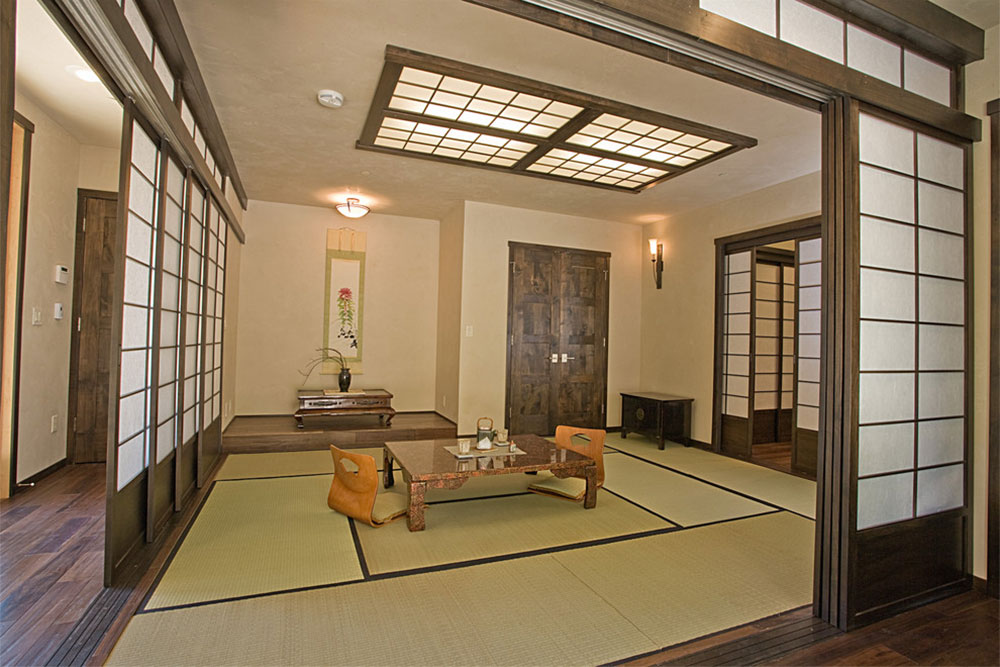 Image source: Trilogy Partners
Image source: Trilogy Partners
Tatami flooring is a type of grass (igusa) which is woven and lasts for many years since it does not get walked on with shoes. It is both warm in winter and cool in summer. These straw mats are in traditionally rectangular with edges of black cloth or brocade.
Lighting
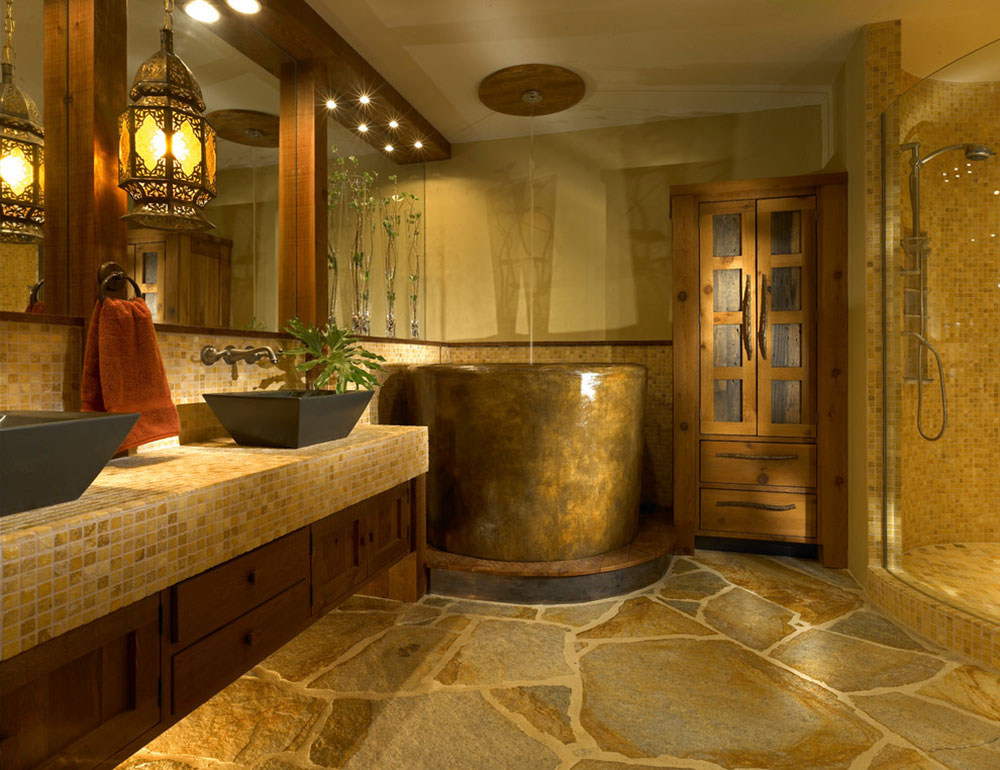 Image source: Jonathan McGrath Construction, LLC
Image source: Jonathan McGrath Construction, LLC
The Japanese cultures see lights as a time to work and not relax, therefore is the lights in a Japanese home always diffused or concealed. When you aim at getting an authentic Japanese interior you need to imitate the calming and soft atmosphere that is gained by soft lighting. In addition, will soft lights emphasize the simplicity of the minimalist furniture style.
Even when you are not Japanese or grew up in a traditional Japanese home, you would love the serenity and peaceful atmosphere of Japanese interior design. It is possible to mimic the traditional Japanese house interior with simplistic and minimalist design.
All you need to do is add minimal furnishings in natural wood, simple greenery, all wooden elements, screens for meditating, plush floor coverings, soaking tub and water elements. Consider to eliminate bright colors and heavy lighting throughout your home and replace it with recessed lights and colors of nature.
If you enjoyed reading this article about what a traditional Japanese home looks like, you should read these as well:
- Squam Residence – Traditional On The Outside And Modern Interiors
- Asian Home Interior Decorating Ideas
- Ideas Of Feng Shui Interior Decorating
The post What a traditional Japanese home interior looks like appeared first on Impressive Interior Design.
source https://www.impressiveinteriordesign.com/traditional-japanese-home/
No comments:
Post a Comment